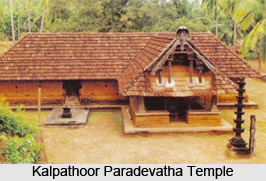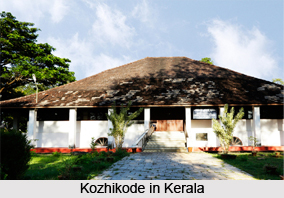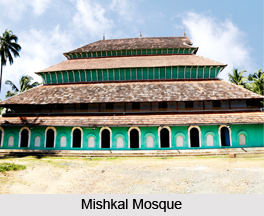 Kozhikode is situated on the southwest coast of the Arabian Sea in the state of Kerala. It went on to develop into a powerful trade and commerce centre. The monuments of Kozhikode include a host of religious as well as historical buildings. Despite being a much acclaimed event, in actuality Vasco Da Gama`s landing was not welcomed by the Moplah traders. The capture of Kozhikode first by the Portuguese and later by the British went through a long process of struggles. In 1501 a Portuguese colony was destroyed by the Moplahs and a series of retaliatory raids took place over the next few years. In 1520 Albuquerque attacked the town but was beset with heavy losses. Finally, in 1513, the local Zamorins made peace with the Portuguese an allowed them to set up a factory. In the 17th century the English went on to set up a factory and the French followed suit in 1722. The Danes came thirty years later. The notorious pirate Captain Kidd also ravaged the port in 1695.when Hyder Ali invaded the place in 1766, the Zamorin set fire to his palace and he perished in then flames along with his family. Ultimately, the entire area was ceded to the British under the treaty of Seringapatnam.
Kozhikode is situated on the southwest coast of the Arabian Sea in the state of Kerala. It went on to develop into a powerful trade and commerce centre. The monuments of Kozhikode include a host of religious as well as historical buildings. Despite being a much acclaimed event, in actuality Vasco Da Gama`s landing was not welcomed by the Moplah traders. The capture of Kozhikode first by the Portuguese and later by the British went through a long process of struggles. In 1501 a Portuguese colony was destroyed by the Moplahs and a series of retaliatory raids took place over the next few years. In 1520 Albuquerque attacked the town but was beset with heavy losses. Finally, in 1513, the local Zamorins made peace with the Portuguese an allowed them to set up a factory. In the 17th century the English went on to set up a factory and the French followed suit in 1722. The Danes came thirty years later. The notorious pirate Captain Kidd also ravaged the port in 1695.when Hyder Ali invaded the place in 1766, the Zamorin set fire to his palace and he perished in then flames along with his family. Ultimately, the entire area was ceded to the British under the treaty of Seringapatnam.
Kozhikode, being a centre of cultural and historical interest, a number of beautiful monuments are found here, primarily in the form of temples and churches.
Religious Monuments in Kozhikode
Tali temple is one of the oldest temples in the region. Built by the rulers of the Zamorin dynasty in the fourteenth century, the temple is dedicated to the Lord Shiva. The temple is an outstanding example of the Keralite School of temple architecture. During the time of the reign of the Zamorin rulers, a week-long gathering of literary minded people, who came together from different parts of the Kingdom, was hosted by the temple. Five different religious ceremonies are performed every day and many pilgrims and visitors flock to the temple every year. However it is during the Malayalam New Year that the Temple is packed full of people and a seven day festival is held which centring on the religious icons in the temple.
Thali Shiva Temple is another monument and a religious shrine that is dedicated to honour the powerful Lord Shiva. An eight day festival takes place in April and May which focuses on honouring Lord Shiva in the Thali Shiva Temple. This festival ends in a holy bath ritual. Many visitors from all over the world congregate to take part visit the Temple, and on festival days, it is very difficult to find an empty place to stand.
 Kalpathoor Paradevatha Temple This temple dates back to the 14th century AD and was built to honor the Kirathamoorthy. It has a granite adhisthana and laterite wall with wooden Dwarapalakas. The ceilings of the `Mukhamandapa` and the `Balikalpura` have beautiful wooden carvings. Different Puranic scenes have been depicted by beautifully made miniature paintings on the ceilings of the almost dilapidated eastern Padipurra. In 1995 the Department of Archaeology declared the temple as a protected monument.
Kalpathoor Paradevatha Temple This temple dates back to the 14th century AD and was built to honor the Kirathamoorthy. It has a granite adhisthana and laterite wall with wooden Dwarapalakas. The ceilings of the `Mukhamandapa` and the `Balikalpura` have beautiful wooden carvings. Different Puranic scenes have been depicted by beautifully made miniature paintings on the ceilings of the almost dilapidated eastern Padipurra. In 1995 the Department of Archaeology declared the temple as a protected monument.
The Mother of God Church is another important place of religious interest in Calicut or Kozhikode. Built in the Roman architectural style, the church dates back to 1515 AD and is the only one of its kind in Kerala. In the Church is housed a 200 year old painting of Mother Mary which makes the church a famous pilgrim site.
The St Mary`s Church was built by the British in 1860 AD to cater to the spiritual needs of their Christian subjects. The Church was founded for the civil members of the collectorate and the English military. In the cemetery adjacent to the church, there is a tomb dated 1717.
Mishkal Masjid It is one of the oldest mosques in the city. Built as a four storied structure supported by wooden pillars the mosque is testament to the architectural splendour of yester years. In 1510 the Portuguese burnt down some parts of it, but the charred portions still remain. The mosque is named after the rich trader who built it.
The Anju Amman Baug is the Fire Temple built by the Parsis who settled in the place over 200 years ago.
The Buddha Vihar, located on customs road, houses a collection of the writings of Buddha.
Historical Monuments in Kozhikode
Kappad beach is the historic site where Vasco da Gama landed on the 27th of May 1498, with 170 men in three vessels. A monument has been erected on the beach to commemorate this historic event. Locally, this rock-studded beach is known as Kappakadavu. A very interesting feature of the landscape is a sprawling rock that juts out into the sea. The temple on the rock is believed to date back to the 13th century.
The Mananchira square encircles the Mananchira tank, the palace tank of king Vikrama one of the Great rulers of the place. The square has an open ground with a musical fountain that attracts many visitors. The architecture is beautifully traditional and harks back to the grandeur of the olden era. The recently innovated square houses some of the most important structures of the city-Commonwealth Trust Factory, Lalitkala academy Hall, Town Hall, Public Library, CSI Church, Kuttichera Tank, Mishkal Mosque etc. The Muchhandipalli mosque located here is the oldest one in Kozhikode. The Kuttichera tank is sacred for both Hindus and Muslims while a number of art exhibitions in Kozhikode take place in the Lalitkala Academy.
Thikkoti Light House overlooks Velliyamkallu off Moodadi coast. The lighthouse was built on the shipwreck of a boat that crashed near the rocky shore. Thus, the lighthouse stands as a reminder of that accident and all sailors take note of it. It is a definite tourist attraction when visiting Kozhikode. The remains of the shipwreck can still be seen here.
The region around the Velliyamkallu rock is the transit home of migratory birds.
Commonwealth Trust building is a 100 years old monument. It was established in the 19th century by the Basel Mission and is responsible for modernizing the terracotta tiles and textile industries in Calicut. Later on it was also responsible for the developing of the colour khaki for the British Army. There is a shop in the premises of the trust that sells textiles as well as terracotta products.
Tipu Sultan transferred the capital Malabar from Calicut to the South Bank of the Beypore River. Here he built a fort in the modern village of Feroke. However he was forced to retire to Coimbatore due to the approach of the monsoons and the project ended in failure. However, a part of the 19th century Laterite fort still remains at Paramukku, Kottasthala.
A Kalari belonging to Thacholi Othenan, the legendary hero of the ballad of Malabar called `Vadakkan Pattu` can be seen at a short distance from Vadakara. A monument and Kalari still exists at this place which is 3 km away from Vadakara. Every year a martial arts festival is held here in the month of March or April. A cattle fair is also held during February at Vadakara.
There is a ruined fort in the town. Vadakara was the scene of many exploits of Thacholi Othenan, the hero of the ballads of North Malabar.



















